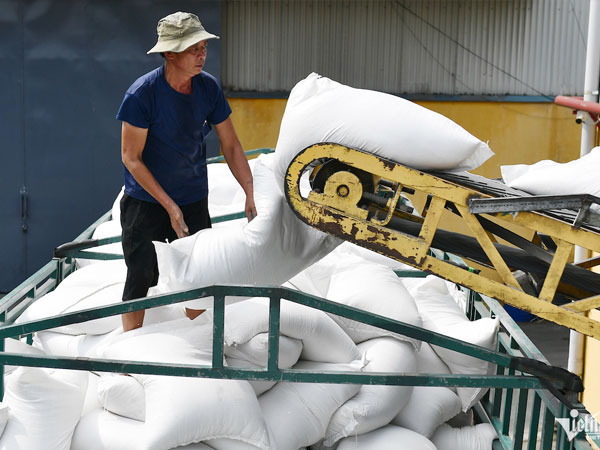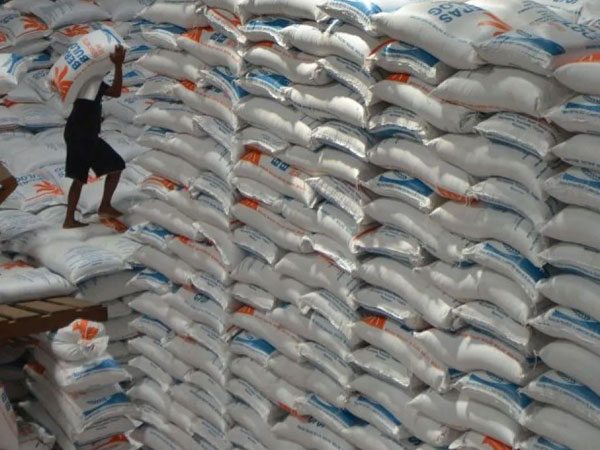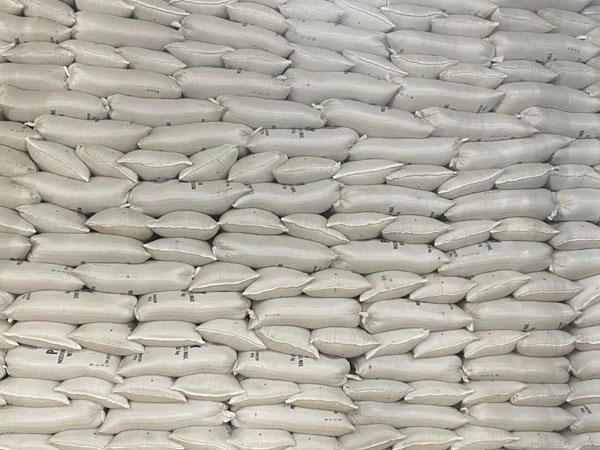 With export prices dropping to $395 per ton, Vietnam faces pressure to adapt its rice production and trade strategy for 2025.
With export prices dropping to $395 per ton, Vietnam faces pressure to adapt its rice production and trade strategy for 2025.
Vietnam’s rice export prices have dropped to $395 per ton, significantly lower than those of regional competitors such as Thailand, India, and Pakistan.
Despite this, the Ministry of Agriculture and Rural Development (MARD) estimates that Vietnam could export up to 15.09 million tons of paddy rice this year, equivalent to 7.54 million tons of milled rice.
Sharp decline in rice export prices
In 2024, Vietnam experienced a record-breaking rice export boom, shipping 9 million tons and earning $5.67 billion - the highest revenue in history.
However, in January 2025, rice exports only increased by 1% in volume but dropped 10.4% in value compared to the same period last year, reaching 500,000 tons and $308 million.
The drop in export prices is even more alarming. According to the Vietnam Food Association (VFA), as of February 14, the price of Vietnamese 5% broken rice fell to $395 per ton, while similar varieties from Thailand, India, and Pakistan were priced at $418, $413, and $402 per ton, respectively.
Vietnam’s 25% broken rice also dropped to $370 per ton, lower than Thailand and India by $25 and $22 per ton, respectively, but still $2 higher than Pakistan’s.
These prices have fallen below Vietnam’s lowest export price in 2023-2024, approaching levels seen in 2022.
Market challenges and declining demand
MARD attributes the price drop to India lifting its rice export ban and Indonesia - the second-largest buyer of Vietnamese rice - reducing imports due to increased domestic production.
Pham Thai Binh, Chairman of Trung An Hi-Tech Agriculture JSC, notes that importing countries currently have high rice reserves, so buyers are not rushing to restock. Additionally, news of ample global supply has put further downward pressure on prices.
According to Vietnam Customs, in January 2025, rice exports to Indonesia plummeted to only 651 tons, generating just $350,000 - a staggering 98% drop compared to January 2024.
Vietnam’s 2025 rice production and export outlook
In a recent report to the Ministry of Finance, MARD outlined the country’s 2025 rice production plan:
Total rice cultivation area: 7 million hectares (down 132,000 hectares from 2024).
Average yield: 61.6 quintals per hectare (up 0.6 quintals per hectare).
Total estimated rice output: 43.14 million tons (down 357,000 tons from 2024).
The Mekong Delta (ĐBSCL) remains the country’s primary rice-producing region, accounting for:
3.78 million hectares of cultivated rice land.
23.97 million tons of total rice production.
After domestic consumption, Vietnam will have 15.09 million tons of surplus rice, equivalent to 7.54 million tons of milled rice for export.
MARD’s forecast for 2025 rice exports is as follows:
First half of 2025: Estimated 4.5 million tons, with peak exports in March-April at 1–1.13 million tons per month.
Second half of 2025: Estimated 3.04 million tons, with peak exports in August-September at 900,000 tons per month.
December 2025: Projected to be the lowest export month, with just 140,000 tons shipped.
Diversifying export markets and improving quality
Deputy Minister Phung Duc Tien emphasized the importance of maintaining exports to key markets such as the Philippines and Indonesia, while also diversifying destinations by expanding into Europe, the U.S., the Middle East, West Asia, and Africa.
To increase profitability, local producers are encouraged to focus on high-quality rice varieties, such as fragrant and specialty rice, which command higher prices in international markets.
Additionally, the government is prioritizing the implementation of the "Sustainable Development of 1 Million Hectares of High-Quality, Low-Emission Rice in the Mekong Delta by 2030" project.
By promoting sustainable, high-value rice production, Vietnam aims to strengthen its position as a leading global rice exporter, adapt to changing consumer trends, and maximize profitability for farmers and businesses alike.














© Copyright 2025 The SSResource Media.
All rights reserved.